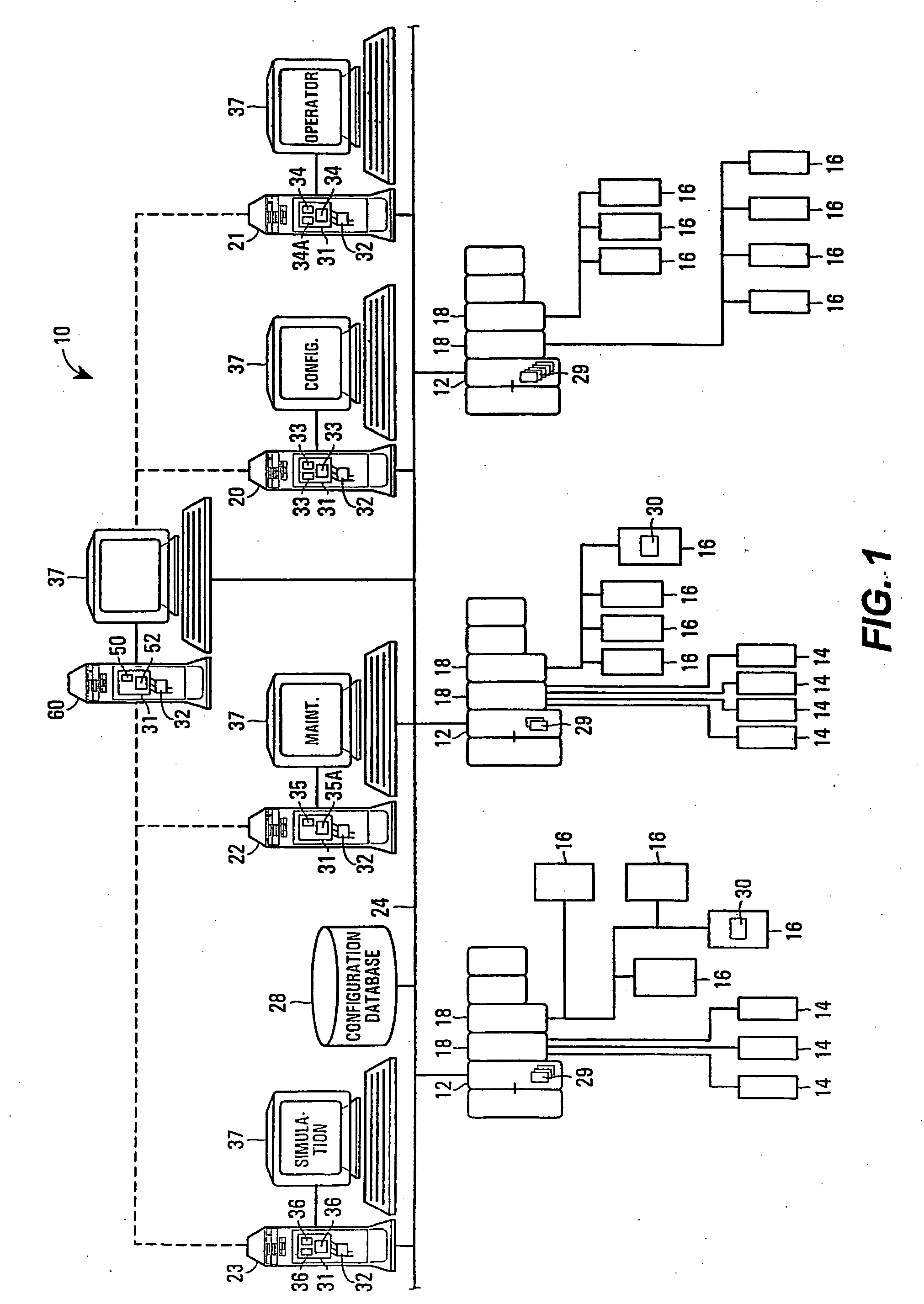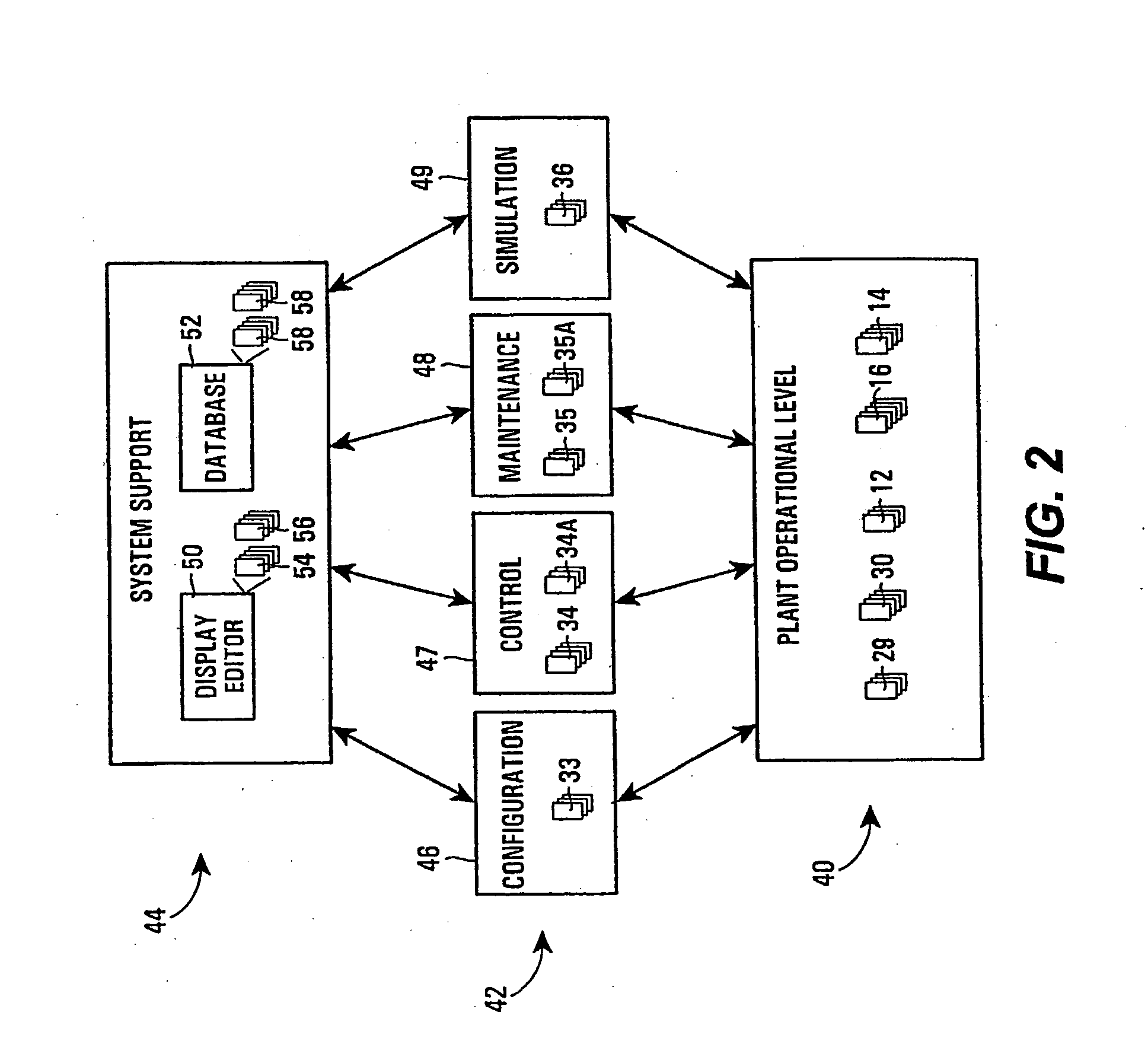Graphic element with multiple visualizations in a process environment
a process environment and graphic element technology, applied in the field of process plants, can solve the problems of limited usefulness to the specific process function, difficult, if not impossible, to use the graphical program created to support the control or other operator in maintenance, configuration or simulation functions, and the limited graphical capabilities of these displays are difficult to implement. to achieve the effect of more versatile graphic elements
- Summary
- Abstract
- Description
- Claims
- Application Information
AI Technical Summary
Benefits of technology
Problems solved by technology
Method used
Image
Examples
Embodiment Construction
[0041]FIG. 1 illustrates an example process plant 10 in which system level graphical support is provided to various functional areas of the plant 10. As is typical, the process plant 10 includes a distributed process control system having one or more controllers 12, each connected to one or more field devices 14 and 16 via input / output (I / O) devices or cards 18 which may be, for example, Fieldbus interfaces, Profibus interfaces, HART interfaces, standard 4-20 ma interfaces, etc. The controllers 12 are also coupled to one or more host or operator workstations 20-23 via a data highway 24 which may be, for example, an Ethernet link. A database 28 may be connected to the data highway 24 and operates as a data historian to collect and store parameter, status and other data associated with the controllers and field devices within the plant 10 and / or as a configuration database that stores the current configuration of the process control system within the plant 10 as downloaded to and stor...
PUM
 Login to View More
Login to View More Abstract
Description
Claims
Application Information
 Login to View More
Login to View More - R&D
- Intellectual Property
- Life Sciences
- Materials
- Tech Scout
- Unparalleled Data Quality
- Higher Quality Content
- 60% Fewer Hallucinations
Browse by: Latest US Patents, China's latest patents, Technical Efficacy Thesaurus, Application Domain, Technology Topic, Popular Technical Reports.
© 2025 PatSnap. All rights reserved.Legal|Privacy policy|Modern Slavery Act Transparency Statement|Sitemap|About US| Contact US: help@patsnap.com



